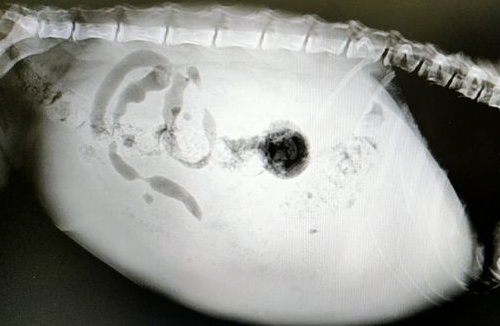How is cat FIP diagnosed?
There is no specific or definitive method for diagnosing FIP. Diagnosis is usually based on symptoms cat shows and Blood as well as biochemical tests data.
If there is a presumed diagnosis of FIP, GS taking can also be used for diagnosis. GS only treats FIP; Therefore, if the cat improves during GS within 3-5 days, the FIP diagnosis is confirmed.

What is FIP?
Wet FIP
Cats under 2 years old are highly suspected of having feline infectious peritonitis when ascites or pleural effusion was found in their body.
Dry FIP
Dry FIP usually has a long subclinical period and needs observed combining with its clinical signs. Symptoms include periodic fever, lethargy, loss of appetite and weight loss, growth retardation, dry hair and that were not responsive to antibiotic therapy. And blood biochemistry contributes to the diagnosis of FIP, FCoV titer≥1:3200 can be reasonably inferred to be FIP.
Dry to Wet
The two forms of FIP are somewhat interchangeable, when it has been observed in experimental infection, the dry form always follows a brief bout of effusive disease. In the terminal stages of naturally occurring dry FIP, immunity can completely collapse and the disease reverts to a more effusive form.
Diagnose From Cat Symptom and Lab data
Clinical symptoms of Wet FIP
a) Growing abdomen, and ultrasound or X-rays indicate the presence of ascites.
b) Breathing is getting faster and faster, and ultrasound or X-rays indicate the presence of pleural effusion.
c) Ascites with pleural effusions.
The usual symptoms will be a), b), c) one of the three.
- Anorexia, fatigue, sleepiness,
- Weight loss,
- Periodic fever, persists more than 4 days (>102.5℉),
- A high coronavirus titer,
- Non-regenerative anemia,
- Increased absolute neutrophils,
- Decreased absolute lymphocytes,
- Decreased ALB, increased GLOB, A:G≤0.7,
- Jaundice, TBIL increased, etc.
Fluid analysis (Ascites, pleural effusion)
✔ Yellow ✔ Yellow-green ✔ Light yellow ✔ Deep yellow ✘ Milk-white ✘ Blood-red


Rivalta test-positive
ascites, pleural effusion.
RTPCR-positive
ascites, pleural effusion, CSF, stool, serum/plasma ect.
* When the Rivalta test result is negative, the possibility of FIP can be reasonably excluded. However, reading of the test is subjective and results are therefore somewhat dependent on the evaluator.
RT-PCR, a commonly used diagnostic test, has about 30% false negative results. A positive result of the test is highly indicative of the presence of FIPV, a negative result can not be used to exclude the disease, especially when only serum, plasma and stool samples are available.
Clinical symptoms of Dry FIP
- Anorexia, fatigue, sleepiness,
- Weight loss,
- Periodic fever, persists more than 4 days.( 102.5℉),
- Non-regenerative anemia,
- Increased absolute neutrophils,
- Decreased absolute lymphocytes,
- Increased TP, increased GLOB, decreased ALB, A:G≤0.7,
- A high coronavirus titer,
- Continued widespread mesenteric lymph nodes enlargement,
- Inflammatory granuloma in multiple organs,
- Mild ascites sits around the organs in the abdomen,
- Jaundice, increased TBIL, etc.
✔ Ocular lesions (uveitis)
✔ Neurological signs lesions (Its ‘clinical feature is rest tremor, rear limb weakness, rigidity, bradykinesia and postural instability. Confusion, urine or fecal incontinence, seizures, convulsions, paralysis, disorientation and shock may be seen in the late stages).


